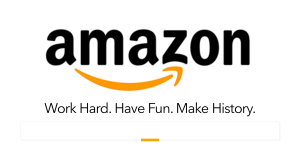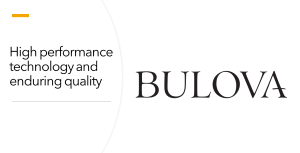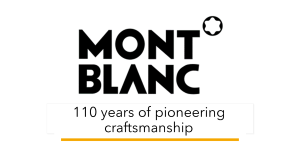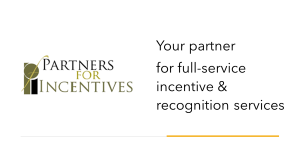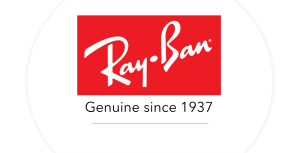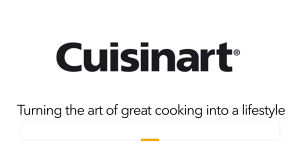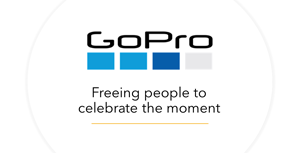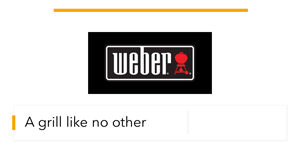Does Employee Recognition Enhance Retention?
 A 3 1/2-year analysis of turnover at a hospital system with nearly 64,000 employees finds a correlation between recognition and retention, says its author. The question for further study: does recognition help enhance retention or do the results simply mean that the people being recognized are the ones who would have stayed anyway? Either way, the white paper estimates the costs of turnover in a health care setting and finds that the costs are much higher among the non-recognized employees, who also departed at a far higher rate than those who were frequently recognized.
A 3 1/2-year analysis of turnover at a hospital system with nearly 64,000 employees finds a correlation between recognition and retention, says its author. The question for further study: does recognition help enhance retention or do the results simply mean that the people being recognized are the ones who would have stayed anyway? Either way, the white paper estimates the costs of turnover in a health care setting and finds that the costs are much higher among the non-recognized employees, who also departed at a far higher rate than those who were frequently recognized.Turnover and Length of Employment Findings
Estimating the Cost of Turnover
 A large healthcare system that chose to remain anonymous partnered with WorkProud, an employee engagement company, to pair recognition and turnover data over a 3 ½-year period, contrasting the employee retention rate among people that received at least a minimal amount of formal recognition to employees who received no recognition. The analysis further explored turnover and recognition among the hospital nursing staff in greater detail.
A large healthcare system that chose to remain anonymous partnered with WorkProud, an employee engagement company, to pair recognition and turnover data over a 3 ½-year period, contrasting the employee retention rate among people that received at least a minimal amount of formal recognition to employees who received no recognition. The analysis further explored turnover and recognition among the hospital nursing staff in greater detail. According to Rick Garlick, Ph.D., who authored the study, “the results showed a stark difference in the employee turnover rate among those that received recognition compared to those that received no recognition during their tenure with the company. Furthermore, when it comes to nurses, there is an especially strong relationship between the amount of recognition received and turnover percentages.”
The study tracked recognition within this healthcare organization from March 1, 2019 to Oct. 1, 2022. Employees were not included in the analysis if they had either recently started employment or if their tenure was 30 days or less, Garlick explains. This eliminated 3,803 people, leaving 60,034 employees in the final analysis, with 13,411 of those being staff nurses.
The number of times each person was formally recognized through the WorkProud system was used in the analysis, along with start date, end date, and current employment status with the organization.
The goal, he says, “was to understand differences between employees who received recognition and those that did not, relative to the length of time they remained with the company during the three-and-one-half year period, as well as whether they left the company or were still employed.”
Turnover and Length of Employment Findings
The maximum tenure during the analysis period was 1,312 days (3.6 years) with an average number of 724 days (two years), and a median number of 707 total days (1.9 years) worked. Over this 3-½ year period, the healthcare system experienced 39% turnover overall (an average of approximately 11% annually).
While this period coincided with the global pandemic, healthcare workers were considered ‘essential’ and therefore there were few involuntary departures, he notes, “although the nature and stress of the work may have caused a higher amount of turnover than usual.”
According to the analysis:
- 21% of the organization’s employees received no recognition during this time.
- 38% received ‘some’ recognition, meaning they had been formally recognized at least once during their tenure with the company.
- The remaining 42% received a higher amount of recognition, averaging at least one formal recognition per quarter during their tenure, although far fewer were recognized at least once per week, which would be the most desirable target, Garlick suggests.
- Turnover among those in the ‘no recognition’ group was nearly 58% percent over the 3 ½ year period, or 16% annually.
- Turnover among those that received at least some recognition was 34% for the 3 ½ year period (9.4% annually).
- This was 71% higher than employees who were recognized at least once during the time they were employed.
- Poor job fit
- Bad relationships with managers
- Lack of discretionary effort
- Pandemic burnout
- And more.
Estimating the Cost of Turnover
The report endeavors to estimate the cost of turnover to the organization, finding that the more recognition people received, the higher the retention rate. The number of employees in the ‘no recognition’ group was 12,294, explains Garlick. Of those employees, 7,107 (58%) left the company within the 3 ½ year period. Had the turnover percentage among the ‘no recognition’ group been the same (34%) as the rest of the company who received recognition, he calculates, “there would have been an expected loss of 4,180 employees compared to the 7,107 who actually left, a difference of 2,927 employees.
Based on Society for Human Resource Management’s formula for estimating the cost of turnover and the median salary for a healthcare worker, the estimated cost to replace each employee ranges from $29,000 to $44,000 in recruiting and training costs, not to mention the time needed to ramp up to full productivity. This suggests that the cost of this incremental turnover costs anywhere from $23 million to $36 million, Garlick estimates.
Focus on Nurses
Focusing specifically on the nursing staff, the analysis in the chart below shows that the amount of recognition is directly related to the percentage that stay or leave the organization. The chart shows that the annual turnover percentage (15%) among nurses was similar to that of the general population who received no recognition (16%). However, even receiving a small amount of recognition was related to 20% less turnover (12% compared to 15%). Annual turnover in the ‘modest’ recognition group was 30% less than the ‘minimal’ recognition group (9% vs. 12%), and annual turnover in the ‘moderate’ recognition group was 16% less than the ‘modest’ recognition group (7% vs. 9%).
The 25% of nurses who received the ‘most’ recognition had the lowest annual turnover percentage (6%) which was half the turnover percentage of the ‘minimal’ recognition group (12%) and 29% lower than the ‘modest’ recognition group (9%).
Relationship Between Amount of Recognition Nurses Received and Turnover Percentages
|
Group |
Percent |
Median Length of Tenure over the 3 ½ year period |
Median Total Recognitions |
Typical Amount of Recognition |
| No recognition | 9% | .5 years | 0 | None |
|
Minimal recognition (Bottom 25%) |
16% | 1.1 years | 2 | About twice a year |
|
Modest recognition (26th-50th percentile) |
25% | 2.3 years | 7 | About 3 times a year |
|
Moderate recognition (51st to 75th percentile) |
25% | 3.5 years | 18 | More than once a quarter |
|
Most recognition (Top 25%) |
25% | 3.5 years | 51 | About four times per quarter |
WorkProud says it helps “clients create digital employee experiences that unify various employee reward and recognition programs and processes under a single, unified platform.” The platform combines recognition, onboarding, milestones, innovation, DEI, wellbeing, and referrals oon a single platform “to simplify and enhance the employee experience.” The goal of the platform, the company says, is to “help clients get rid of their ineffectual, outdated approaches to employee rewards and recognition. Instead, we provide a streamlined, unified platform that aligns with a company’s core values and inspires employees to feel proud of the work they do and proud of their company.”
Subscribe to RRN’s weekly e-newsletter.
Profit From the “S” of Environmental, Social, Governance (ESG)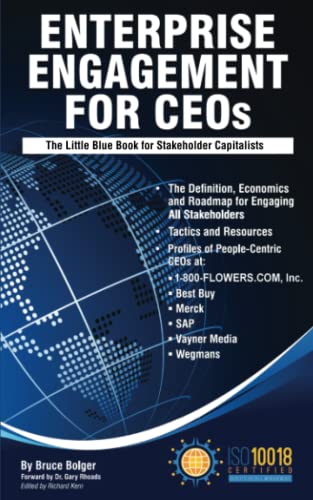
Through education, media, business development, advisory services, and outreach, the Enterprise Engagement Alliance supports boards, business analysts, the C-suite, management in finance, marketing, sales, human resources and operations, etc., educators, students and engagement solution providers seeking a competitive advantage by implementing a strategic and systematic approach to stakeholder engagement across the enterprise. Click here for details on all EEA and RRN media services.
1. Professional Education on Stakeholder Management and Total Rewards
Strategic Business Development for Stakeholder Management and Total Rewards solution providers, including Integrated blog, social media, and e-newsletter campaigns managed by content marketing experts.
4. Advisory Services for Organizations
Stakeholder Management Business Plans; Human Capital Management, Metrics, and Reporting for organizations, including ISO human capital certifications, and services for solution providers.
5. Outreach in the US and Around the World on Stakeholder Management and Total Rewards
The EEA promotes a strategic approach to people management and total rewards through its e-newsletters, web sites, and social media reaching 20,000 professionals a month and through other activities, such as:

Through education, media, business development, advisory services, and outreach, the Enterprise Engagement Alliance supports boards, business analysts, the C-suite, management in finance, marketing, sales, human resources and operations, etc., educators, students and engagement solution providers seeking a competitive advantage by implementing a strategic and systematic approach to stakeholder engagement across the enterprise. Click here for details on all EEA and RRN media services.
1. Professional Education on Stakeholder Management and Total Rewards
- Become part of the EEA as an individual, corporation, or solution provider to gain access to valuable learning, thought leadership, and marketing resources.
- The only education and certification program focusing on Stakeholder Engagement and Human Capital metrics and reporting, featuring seven members-only training videos that provide preparation for certification in Enterprise Engagement.
-
EEA books: Paid EEA participants receive Enterprise Engagement for CEOs: The Little Blue Book for People-
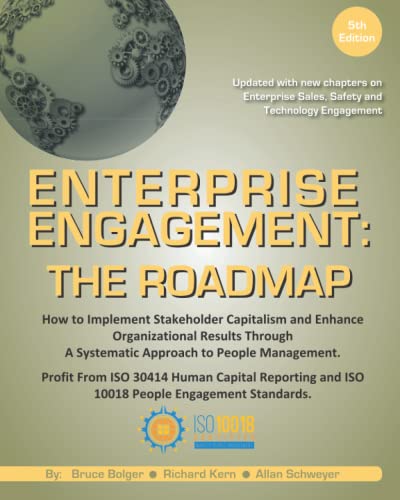 Centric Capitalists, a quick implementation guide for CEOs; Enterprise Engagement: The Roadmap 5th Edition implementation guide; a comprehensive textbook for practitioners, academics, and students, plus four books on theory and implementation from leaders in Stakeholder Management, Finance, Human Capital Management, and Culture.
Centric Capitalists, a quick implementation guide for CEOs; Enterprise Engagement: The Roadmap 5th Edition implementation guide; a comprehensive textbook for practitioners, academics, and students, plus four books on theory and implementation from leaders in Stakeholder Management, Finance, Human Capital Management, and Culture.
- ESM at EnterpriseEngagement.org, EEXAdvisors.com marketplace, ESM e–newsletters, and library.
- RRN at RewardsRecognitionNetwork.com; BrandMediaCoalition.com marketplace, RRN e-newsletters, and library.
- EEA YouTube Channel with over three dozen how-to and insight videos and growing with nearly 100 expert guests.
Strategic Business Development for Stakeholder Management and Total Rewards solution providers, including Integrated blog, social media, and e-newsletter campaigns managed by content marketing experts.
4. Advisory Services for Organizations
Stakeholder Management Business Plans; Human Capital Management, Metrics, and Reporting for organizations, including ISO human capital certifications, and services for solution providers.
5. Outreach in the US and Around the World on Stakeholder Management and Total Rewards
The EEA promotes a strategic approach to people management and total rewards through its e-newsletters, web sites, and social media reaching 20,000 professionals a month and through other activities, such as:
- Association of National Advertisers Brand Engagement 360 Knowledge Center to educate brands and agencies.
- The EEA Engagement widget to promote, track, and measure customers/employee referrals and suggestions that can be connected to any rewards or front-end program management technology.
- The Stakeholder Capitalism free insignia to promote a commitment to better business.
- The BMC Brand Club and transactional storefronts to educate corporate and agency buyers on the IRR market.
- The EME Gold program to educate the top 3% of promotional consultants on selling engagement and rewards services.







